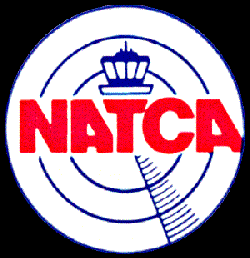'Unsafe,' They Say; 'And Our Morale is Low, Too.'
The controllers in Chicago released a statement that began,
"Handcuffed with insufficient staffing, overloaded with rising and
record amounts of traffic, saddled by the Federal Aviation
Administration with complicated revisions to landing procedures at
the world’s busiest airport and stung by rising numbers of
errors and declining morale, air traffic controllers in the Chicago
area have declared 'enough is enough.'"
 "The level of safety has diminished below an
acceptable level," said Ray Gibbons, veteran controller and
president of the National Air Traffic Controllers Association local
chapter at Chicago Terminal Radar Approach Control in Elgin (IL).
"Morale is as low as I’ve ever seen it. There’s even a
'fear mentality' present. Controllers are hoping it won’t be
them if something bad happens."
"The level of safety has diminished below an
acceptable level," said Ray Gibbons, veteran controller and
president of the National Air Traffic Controllers Association local
chapter at Chicago Terminal Radar Approach Control in Elgin (IL).
"Morale is as low as I’ve ever seen it. There’s even a
'fear mentality' present. Controllers are hoping it won’t be
them if something bad happens."
Understaffed, Union Asks NTSB for Help Before Retirement
Crashes System
Staffing remains the most critical need. Chicago TRACON, the
nation’s third-busiest approach control facility, is
authorized to staff 100 controllers but currently employs just 73
full performance level personnel, a third of which will be eligible
to retire within two years. Nearly half can retire in four years.
At the Chicago Air Route Traffic Control Center in Aurora (IL), the
nation’s third-busiest en route facility, 40 percent of the
controller workforce will be eligible to retire within the next
five years. Controllers at both facilities cite this understaffing
problem for a highly unusual rash of errors this year. At the
center, there have been 12 errors in the past 15 days.
"It’s very simple – we’ve got too few
controllers working too many airplanes in Chicago and they are
bravely trying to handle a vast array of obstacles thrown their way
on nearly every shift," NATCA President John Carr said. "It’s
unacceptable. For the sake of the public’s air safety, we
demand the Federal Aviation Administration address this situation
immediately and take the steps necessary to fix this rapidly
deteriorating and critical problem."
While air traffic nationwide is down two percent from
pre-September 11, 2001 levels [NATCA's figures --ed.], the Chicago
area is the clear exception. In 2002, controllers at both
O’Hare International Airport and the TRACON facility worked a
record amount of flights and the numbers continue to rise. The
TRACON expects to approach 1.5 million operations this year.
Meigs' Destruction Overloads Midway
 In
addition, controllers at Midway Airport tower have handled 15
percent more traffic in April since Chicago Mayor Richard Daley
-– in the middle of the night and with no warning -–
closed Meigs Field downtown by ripping up the runway, unnecessarily
clogging other area airports with over 1,500 monthly
operations.
In
addition, controllers at Midway Airport tower have handled 15
percent more traffic in April since Chicago Mayor Richard Daley
-– in the middle of the night and with no warning -–
closed Meigs Field downtown by ripping up the runway, unnecessarily
clogging other area airports with over 1,500 monthly
operations.
One guy gets sick, and the system goes bonkers...
Other problems persist. On Monday, the lone radar technician at
O’Hare was on sick leave and there was no replacement due to
a chronic understaffing problem. This had serious implications when
a radar failure occurred for more than two-and-a-half hours,
causing nearly 200 delays and forcing O’Hare controllers to
shut off departures.
On Tuesday, a badly overloaded sector at the TRACON forced
controllers to scramble to separate aircraft and sort out a host of
potential conflicts. On top of this, what used to be a sequenced,
orderly flow of arriving planes into O’Hare has turned into a
daily disorganized cluster of aircraft on converging courses with
little or no margin for error, because of an FAA directive which
drastically changed the rules of aircraft participation in a
program designed to make more efficient use of valuable runway
capacity.
 Unfortunate... ANN/SportPlane Resource Guide Adds To Cautionary Advisories
Unfortunate... ANN/SportPlane Resource Guide Adds To Cautionary Advisories ANN FAQ: Turn On Post Notifications
ANN FAQ: Turn On Post Notifications ANN's Daily Aero-Term (04.29.24): Visual Approach Slope Indicator (VASI)
ANN's Daily Aero-Term (04.29.24): Visual Approach Slope Indicator (VASI) ANN's Daily Aero-Term (04.28.24): Airport Marking Aids
ANN's Daily Aero-Term (04.28.24): Airport Marking Aids ANN's Daily Aero-Linx (04.28.24)
ANN's Daily Aero-Linx (04.28.24)




